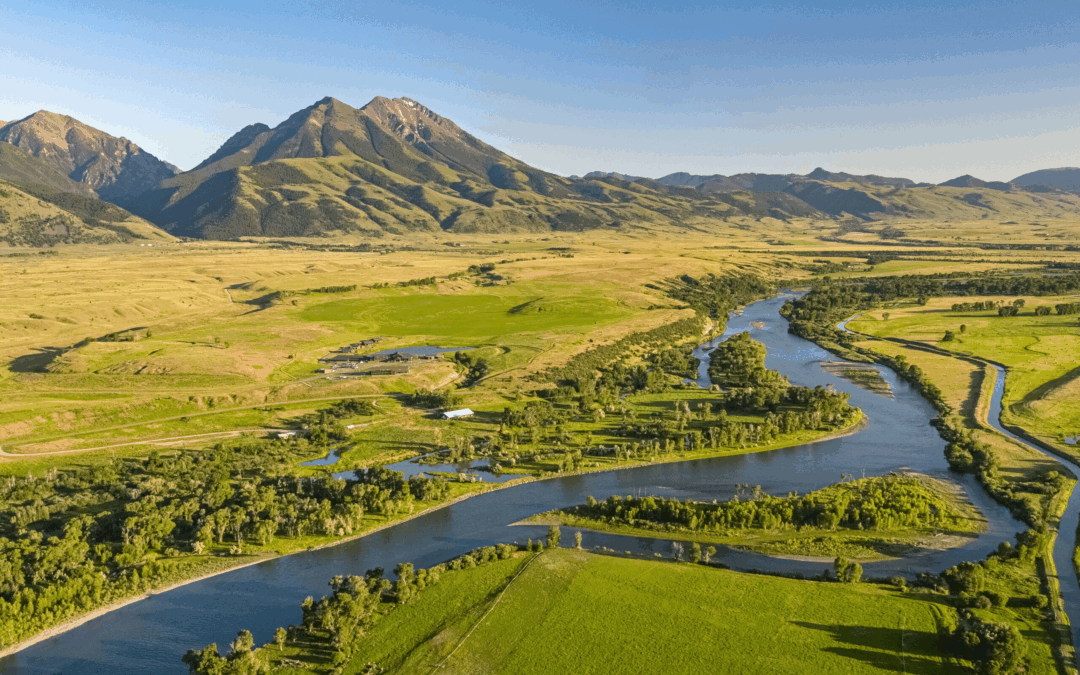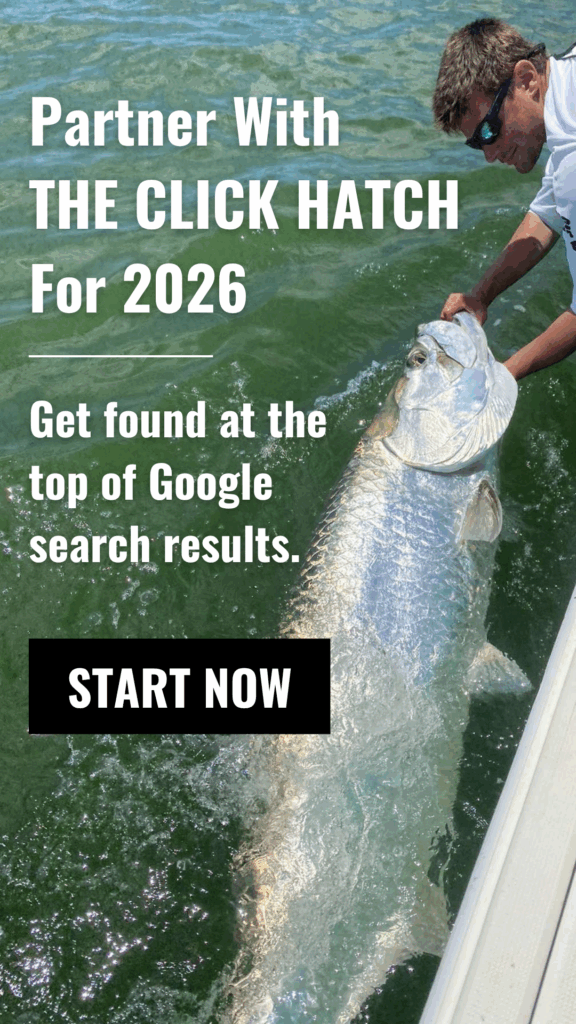Let’s talk about what’s really happening when people land on your site — and why they’re not calling.
Look, I get it. You’re a guide, not a web developer. You’d rather be chasing redfish in the backcountry or rowing a drift boat through tasty runs than messing around with SEO, page layouts, or mobile responsiveness.
But here’s the truth a lot of folks don’t want to hear:
Your website might be the reason your phone isn’t ringing.
And it’s not always because you don’t have one — it’s usually because the one you do have isn’t doing the job it’s supposed to do. You don’t need some flashy five-figure buildout — you just need a site that’s built with your client in mind. A site that speaks clearly, loads fast, looks good on mobile, and answers the questions your potential clients are already asking.
Let’s break it down, no fluff — just what I’ve seen over and over working with charters, lodges, and guides across the country.
Most Fishing Websites Are Built Backwards
A lot of guys build their websites like a digital brochure:
- Big fish pics? ✅
- “About the Captain” story from 1997? ✅
- List of trip options with no prices? ✅
- Contact form buried at the bottom of the page? ✅
Sound familiar?
Here’s the problem: your website isn’t just something to “have” — it’s your hardest-working salesperson. It’s the first impression most of your future clients will ever get. And if it doesn’t answer their questions quickly and clearly, they’re gone faster than a spooky bonefish.
What Your Website Needs to Do
Here’s the simple checklist we use when we’re evaluating whether a guide’s site is helping or hurting:
- Say exactly what you offer in plain language — don’t make someone guess.
- Mention your exact location — especially if you’re targeting search traffic.
- Make it easy to call or book — put your number front and center.
- Be mobile-friendly — at least half of your traffic is on a phone.
- Use real photos of your clients, boats, or lodge — not just trophy fish.
- Include reviews or testimonials — let others tell your story.
- Have a page for each major service or species you target — this is HUGE for SEO and Google Ads.
Most importantly, you need to make sure your site matches the keywords people are searching on Google. If someone types in “Gunnison River fly fishing guides” — you better have that exact phrase on your site. Otherwise, Google isn’t going to favor your listing in search results, and even if it does, the visitor might bounce off your site.
Here’s an example that hits close to home: a project we took on for a killer Montana guide service — Wet Net Outfitters out of Livingston.
The Before: A Great Guide with a Site That Didn’t Show It
When we first connected with the crew at Wet Net Outfitters, it was clear they had everything a traveling angler could want — experienced guides, a prime location near the Yellowstone River, solid lodge partnerships, and access to some of the best trout water in the lower 48.
But their website? It didn’t reflect any of that.
There was little to no info about the specific rivers they fish, no real seasonal breakdown, and nothing about lodging options or what the overall experience felt like. The site was ok – but didn’t do them any favors in terms of standing out in one of the most densely population state in terms of fishing guides.
And guess what? That kind of online presence turns away more people than it attracts. Especially when folks are dropping thousands of dollars on a trip, they want to know exactly what they’re signing up for. Double especially when there’s boatloads of other guide services offering similar trips in the area.
The After: A Complete Overhaul That Showed Off the Real Experience
Here’s what we did:
- Dialed in the copy to clearly explain what rivers they guide on — including specific pages for each river — and broke it out by season so visitors could see what fishing looks like year round.
- Added details about lodging partnerships and recommendations for traveling anglers who want to stay close to the action.
- Upgraded all the visuals with high-res photos of actual clients on the water, real guides in their element, and the kind of fish that make you want to book a trip right now.
- And here’s the game-changer: we created a homepage “vibe check” video — a short, authentic look at what a day on the water with Wet Net Outfitters really feels like. The landscape, the guides, the drifts, the fish — all wrapped into a couple minute video that lets someone picture themselves there.
Suddenly, the site didn’t just describe the experience. It showed it.
Now, when someone searches “Montana fly fishing guides” or “yellowstone river float trips” they don’t just find Wet Net Outfitters — they connect with them. The message is clear: this isn’t just another guide service. It’s the real deal.
Good Website = Better Ads = More Trips
Here’s the connection a lot of folks miss: your Google Ads are only as good as the website you’re sending people to.
You can have perfect keywords and well-written ads, but if your site doesn’t load fast, doesn’t say what you do, or doesn’t have an obvious way to contact you — you’re wasting money.
We’ve seen guys double their lead volume without changing a single ad — all because they cleaned up their website.
What You Can Learn From This
Most fishing websites fail for two reasons:
- They don’t give enough specific information.
- They don’t communicate the experience.
Clients aren’t just buying a fishing trip — they’re buying a memory, a story, a once-a-year escape. If your site isn’t helping them picture it, you’re missing the mark.
You need:
- A clear list of rivers/lakes/fisheries
- Info on seasonality and what to expect
- Details on lodging, travel, and what’s included
- Strong photos (of real clients, not just fish)
- A video or two that captures the energy of your trips
- An obvious way to book or call right now
And yes, it should all look good on mobile — because 70% of your traffic is probably coming from phones.
The Bottom Line
Your website is often the first and last impression someone gets before they decide to book with you — or not. Especially if you’re running Google Ads campaigns for your fishing charter and paying to push people to your website… Your website needs to win that first impression game when you know potential clients are checking out more than just one outfitter.
Wet Net Outfitters had the fish, the guides, and the reputation. Once their website finally reflected that, the results started rolling in. Their ads worked better. Their organic traffic stuck around longer. And most importantly, more people picked up the phone and said, “I want that.”
So if your bookings have been slow, and you’re wondering whether your online presence is helping or hurting you, ask yourself: Would I book a trip off my own website?
If the answer’s anything but hell yes, let’s fix it.
Don’t Want to Mess With This Yourself?
Totally get it. If reading this made you want to grab your rod and go fish just to avoid dealing with your site, that’s where we come in.
At The Click Hatch, we work exclusively with fishing guides, charters, and lodges. We speak your language, we know your business, and we’ll make your site work harder than a first mate on a hot bite.
If you’re tired of wondering why your website isn’t getting you more calls, let’s fix that. We can even run a free audit to show you what’s working, what’s not, and what it’ll take to start turning site visits into bookings.
Tight lines,
Dan at The Click Hatch


